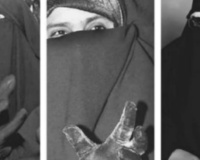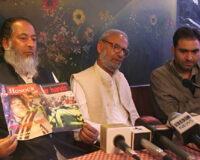Even wars have rules. Not every person or object could be targeted during conflict. The civilians especially are termed as ‘protected persons’ under international humanitarian law (IHL). The protection extends to their properties as well. Therefore, protection of the civilians and civilian properties stands as the cornerstone of IHL as established by ICTY.[1] IHL establishes provisions for the general protection of civilian objects and property. The law appears well-settled, even though attacks against civilian’s properties continue to be disturbingly common in armed conflict.
IHL and Civilians Objects:
IHL protects private property under occupation. This rule is part of customary international humanitarian law (CIHL), binding on all states.[2] Rule 9 defines civilian objects as “all objects that are not military objectives,” whereas Rule 7 creates an obligation upon the parties to the conflict to distinguish between civilian objects (protected objects) and military objectives. Rule 10 further elaborates that civilian objects are protected against attack unless and for such time as they are military objectives. IHL forbids attacks, reprisals, or other acts of violence against such objects.
The Hague Convention of 1907[3] first provided for financial liability against states whose armed forces intentionally destroy civilian property in war. Furthermore, similar liability to extensive destruction and appropriation of property that is not justified by military necessity is considered a grave breach of an article common to all Geneva Convention (GC) of 1949,[4] as well as in the two Additional Protocols (AP) of 1977.[5] Attacks against civilians and their property are prohibited by articles 33 and 53 of the IVGC and by article 52 of Protocol I regardless of who owns them.
Furthermore Fourth GC was designed to protect property in order to spare civilian populations the sufferings which might result from the destruction of their houses, clothes, foodstuffs and the means of earning their livings[6] had happened at Oradour and Lidice.[7] Article 18 prohibits attack at any time against civilian hospitals or medical care facilities.
Indian Occupied Kashmir (IOK) and Breach of Geneva Conventions:
IOK being one of the most militarized zone of the world has witnessed the brutalities of Indian occupational forces since 1947. In their hunt for rebels, the Indian forces deliberately caused loss to civilian’s life and destroyed the private properties of civilians including their houses, shops, go-downs etc. Forces have also attacked ambulances and medical supplies over the period of time that further added to the miseries of people of IOK. Hence, it is safe to say that the Indian occupational forces never complied with IHL and are continuously breaching four GC’s.
Between 1989 and 2001, at least 5,368 buildings, including shops, houses and other privately-owned properties in the region, were heavily damaged in counter-insurgency operations. An arson was carried out in Lal Chowk Srinagar in 1993 which burned the whole area killing 125 innocent Kashmiris and destroying 59 residential houses, 190 shops, 53 go-downs, 2 office complexes, 2 schools and a shrine.[8] Indian occupational first caused the destruction and then also stopped any aid to help the victims. It is forbidden to prevent goods from being supplied or to hinder relief operations delivering such supplies under IHL.[9]
Homes are frequently destroyed by Indian troops attempting to flush out militants during cordon-and-search operations in Kashmir.
During civilian uprisings of 2008, 2010 and 2016, Indian forces deliberately attacked ambulances, assaulted doctors and paramedical workers and cracked down voluntary aid workers.[10] They stopped vehicles carrying injured Kashmiris towards hospitals violating several provisions of IHL. The free passage of objects indispensable to the survival of the civilian population is guaranteed by IHL but Indian forces yet gain breached the provision of IHL. [11] According to official data accessed by India Spend,[12] in South Kashmir’s Pulwama district alone, at least 105 homes were destroyed during gunfights between 2015 and March 2018. Gunfights across Kashmir follow the same routine: homes reduced to rubble, vast funerals for militants, people thronging the sites of the gunfights. Indian forces are using disproportionate force lowing up or burning houses. [13] On April 10 and 11 of 2018, Indian soldiers set four houses and two shops on fire as they engaged in a gun fight with militants. After a month, soldiers burned down three houses in Turkwangam South Kashmir.[14]
Recently on 8th April 2020, a video clips showing armed forces damaging house of a militant emerged on social media. It was tweeted several times. The army personnel were using gasoline and flamethrowers meant to blow up the house entirely. Indian occupational forces laid siege to Arampora village in northern Baramulla district after cordoned and search operation (CASO) and killed a militant Sajjad Ahmed Dar. Later, they demolished his house and killed his livestock.
When we refer to the definition of “civilian objects” under CIHL, it is crystal clear that the, residential houses, shops, go-downs, office complexes and schools all fulfil the criteria of being a civilian object. None of the civilian properties damaged by the Indian occupational forces were being used to fulfill any military objective. Hence Indian forces targeted civilian objects in the conflict whereas it was bound to distinguish between civilian and military objects.[15] The trial chamber endorsed in the Blaskic case that the attacks that have caused damage to civilian property and targeting civilian property is an offence when not justified by military necessity.[16] Indian forces are shamelessly committing this offences in IOK since decades. The search party during so-called operations against militants finds building clear but still they burn it down. Even if militants are present they lack arms and ammunition and they are not capable of causing injury to armed forces. There has been no evidence of use of these premises in IOK for an effective contribution to military action and no military advantage has been gained through these buildings. Therefore these properties cannot be termed as military objects.[17]
If we add the element of the military necessity it has been endorsed by ICC in Prosecutor V. Jean-Pierre Bemba Gombo[18] that it consists of those measures which are indispensable for securing ends of war. But in the case of IOK, the forces try to ensure clean operations. The methods used to expedite operations involve tossing improvised explosive devices inside houses The Army uses flamethrowers and no warning is given to militants. The disproportionate use of force itself explains the misuse of principle of “military necessity”.
As already discussed Indian forces have deliberately caused extensive damage to houses and business premises of Kashmiri Muslims. Not only have this but soldiers have created terror among people of IOK and also looted them. The extensive destruction and appropriation of property in IOK is not justified by military necessity and is carried out unlawfully and wantonly. This vandalism of property is breach of 4th GC and CIHL. According to Article 8(2)(b)(ii) of the Rome Statute 1998 , deliberate attacks on civilians and civilian objects are prohibited and amounts to war crimes. Therefore, the state of India is committing war crimes in the Muslim majority territory of IOK.
India being a high contracting party to all four Geneva Conventions cannot absolve its responsibility for the war crimes. Although India is not a party to Rome Statute but ICC prosecutor can take cognizance of the war crimes in IOK by initiating investigations proprio motu under Article 15 of the Rome Statute. I therefore urge prosecutor of the ICC Ms Fatou Bensouda to immediately initiate an impartial and independent investigation against war crimes in IOK by world’s so called largest democracy of India. All the war criminals shall be exposed and prosecuted as such.
It’s high time for humanitarian organizations like ICRC and the National Societies of the Red Cross and Red Crescent to realize their duty and prevent and alleviate sufferings of oppressed voices of Muslim majority state of Indian Occupied Kashmir keeping in view their mandate under Geneva Conventions.
ADCOCATE LAIBA AMJAD
The author is currently affiliated with Legal Forum for Oppressed voices of Kashmir as a socio- legal research associate.
Copyright @ Legal Forum for the Oppressed Voices of Kashmir
[1] Prosecuror v. Kupreskic, Case No. IT-95-l6, Judgment, 521 (Jan. 14,2000). “The protection of civilians in time of armed conflict is the bedrock of modern humanitarian law”.
[2] International Committee of the Red Cross (ICRC) Customary IHL Database, Rule 50
[3] Article 47 of the Hague Convention of 1907, pillaging, imposing collective punishment and destruction of public and private property of protected persons is prohibited,
[4] An article GCI Art. 50, GCII Art. 51, GCIII Art. 130, and GCIV Art. 147 common to all four Geneva Conventions of 1949 notes that ” High Contracting Party shall be allowed to absolve itself or any other High Contracting Party of any liability incurred by itself or by another High Contracting Party in respect of breaches referred to in the preceding article [on grave breaches”
[5] Article 91, Additional Protocol II “A belligerent party which violates the provisions of the said regulations shall, if the case demands, be liable to pay compensation. It shall be responsible for all acts committed by persons forming part of its armed forces.”
[6] Lea Brilmayer and Geoffrey Chepiga, Ownership or Use? Civilian Property Interests In International Humanitarian Law, Harvard Lae Journal, Volume 49. Number 2, 2008
[7] Oradour-sur-Glane (France) and Lidice (Czechoslovakia) were sites of Nazi massacres of civilians during World War II.
[8] Edward A. Gargan, The New York Times, Indian Troops Are Blamed As Kashmir Violence Rises, April 18, 1993; Rule 38 of CIHL states “Religious and cultural property should be respected whether or not it is marked with a sign.”
[9] API Art. 70; APII Art. 18; Rule 55 of the customary IHL.
[10] Annual Human Rights Reviews of JKCCS of the year 2008, 2010 and 2016.
[11] GCIV Arts. 59, 17, and 23; API Art. 70; APII Art. 18; Rule 5 and is linked to the independent monitoring of distribution by the entity supplying the objects.
[12] India Spend is a non-profit and a project of The Spending & Policy Research Foundation located in Lower Parel in Mumbai, and registered as a Charitable Trust with the Charity Commissioner, Mumbai.
[13] Rayan Naqash, Breaking people’s will’: In Kashmir, gunfights leave a trail of destroyed homes and rising anger, Sep 20, 2018. Available on https://scroll.in/article/894739/breaking-peoples-will-in-kashmir-gunfights-leave-a-trail-of-destroyed-homes-and-rising-anger
[14] Zafar Dar, Why Indian forces are setting houses on fire in disputed Kashmir, 19 November 2018. Available at https://www.trtworld.com/magazine/why-indian-forces-are-setting-houses-on-fire-in-disputed-kashmir-21776
[15] Rule 7 of CIHL creates an obligation upon the parties to the conflict to distinguish between civilian objects (protected objects) and military objectives
[16] Blaskic, IT-95-14-T, Judgement (“Blaskic Trial Judgement”), 3 March 2000, para. 180, Judicial Supplement No. 13.
[17] Rule 8 CIHL “military objectives are limited to those objects which by their nature, location, purpose or use make an effective contribution to military action and whose partial or total destruction, capture or neutralization, in the circumstances ruling at the time, offers a definite military advantage”
[18] International Criminal Court, Trial Chamber III, No.: ICC-01/05-01/08, Prosecutor v. Jean-Pierre Bemba Gombo, 21 March 2016, available at: https://www.icc-cpi.int/CourtRecords/CR2016_02238.PDF
Trial Chamber, endorsed the definition of military necessity set out in Article 14 of the Lieber Code, which provides that “[m]ilitary necessity, as understood by modern civilized nations, consists in the necessity of those measures which are indispensable for securing the ends of the war, and which are lawful according to the modern law and usages of war”






